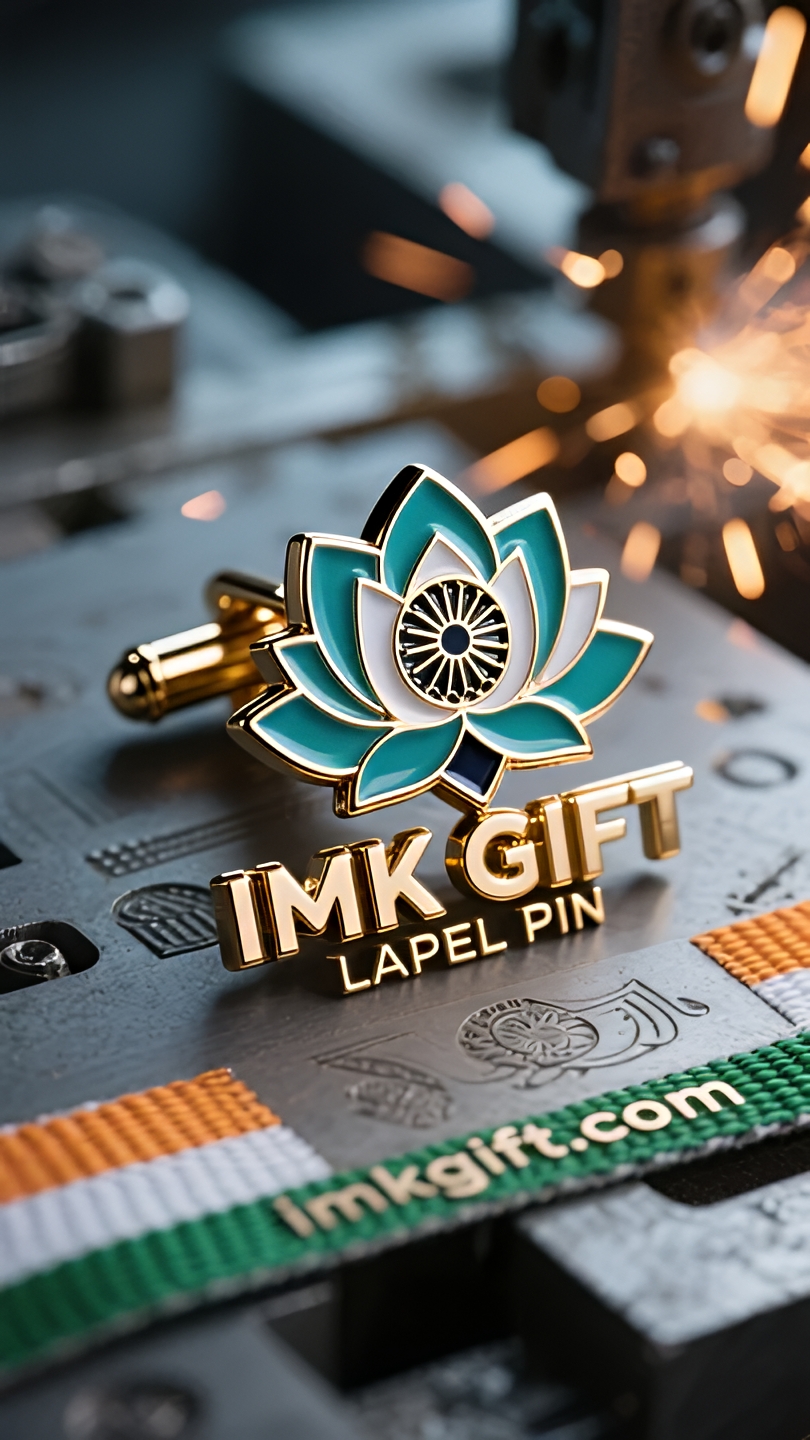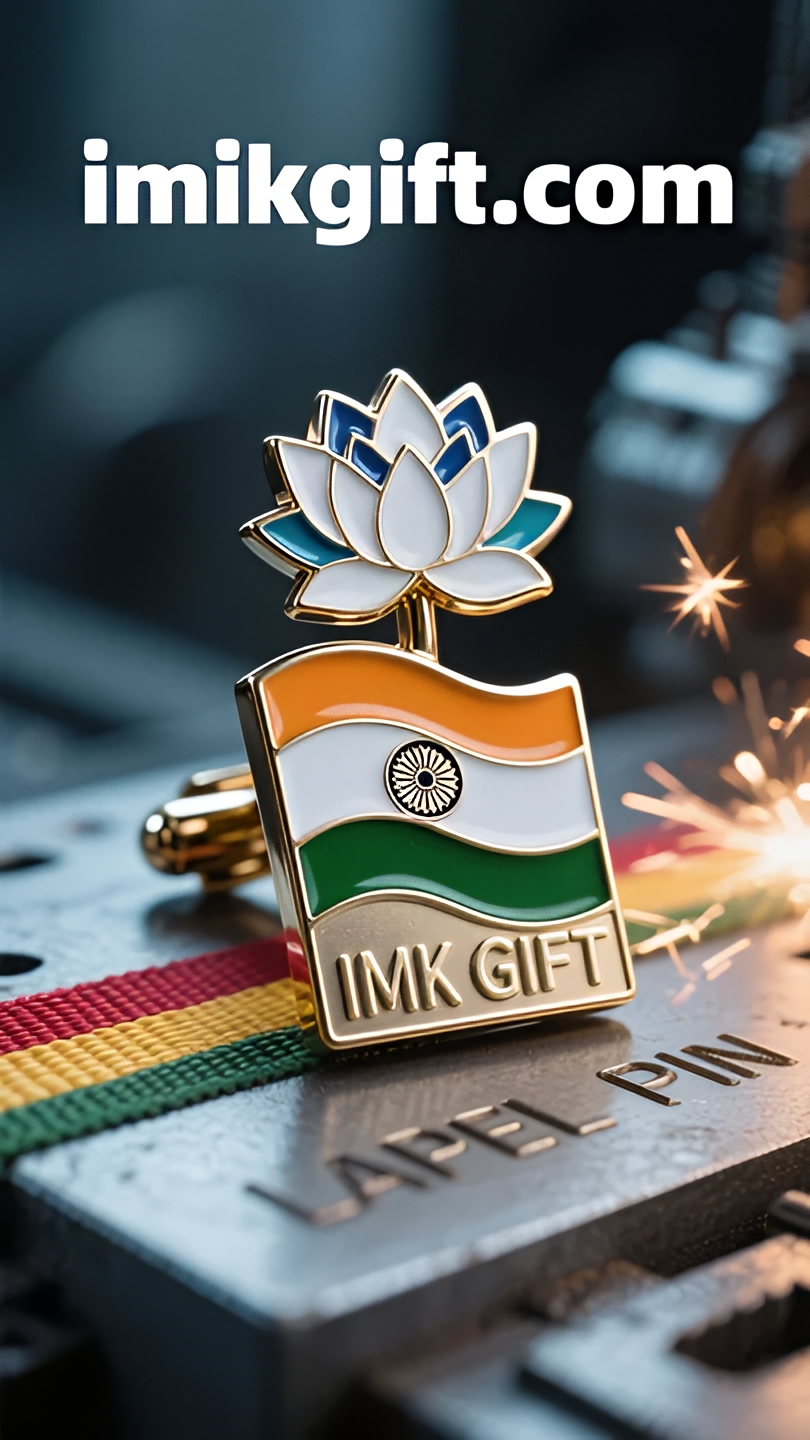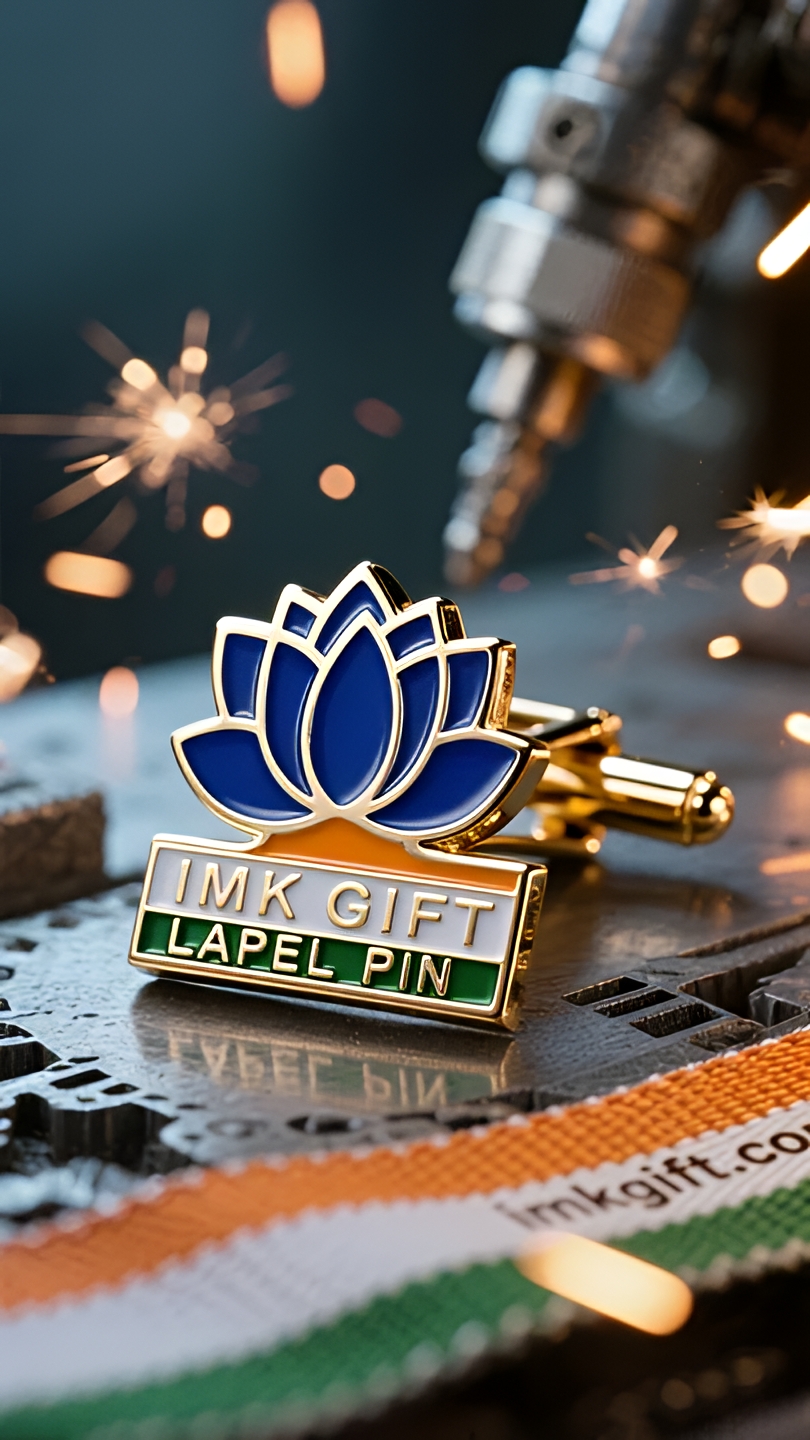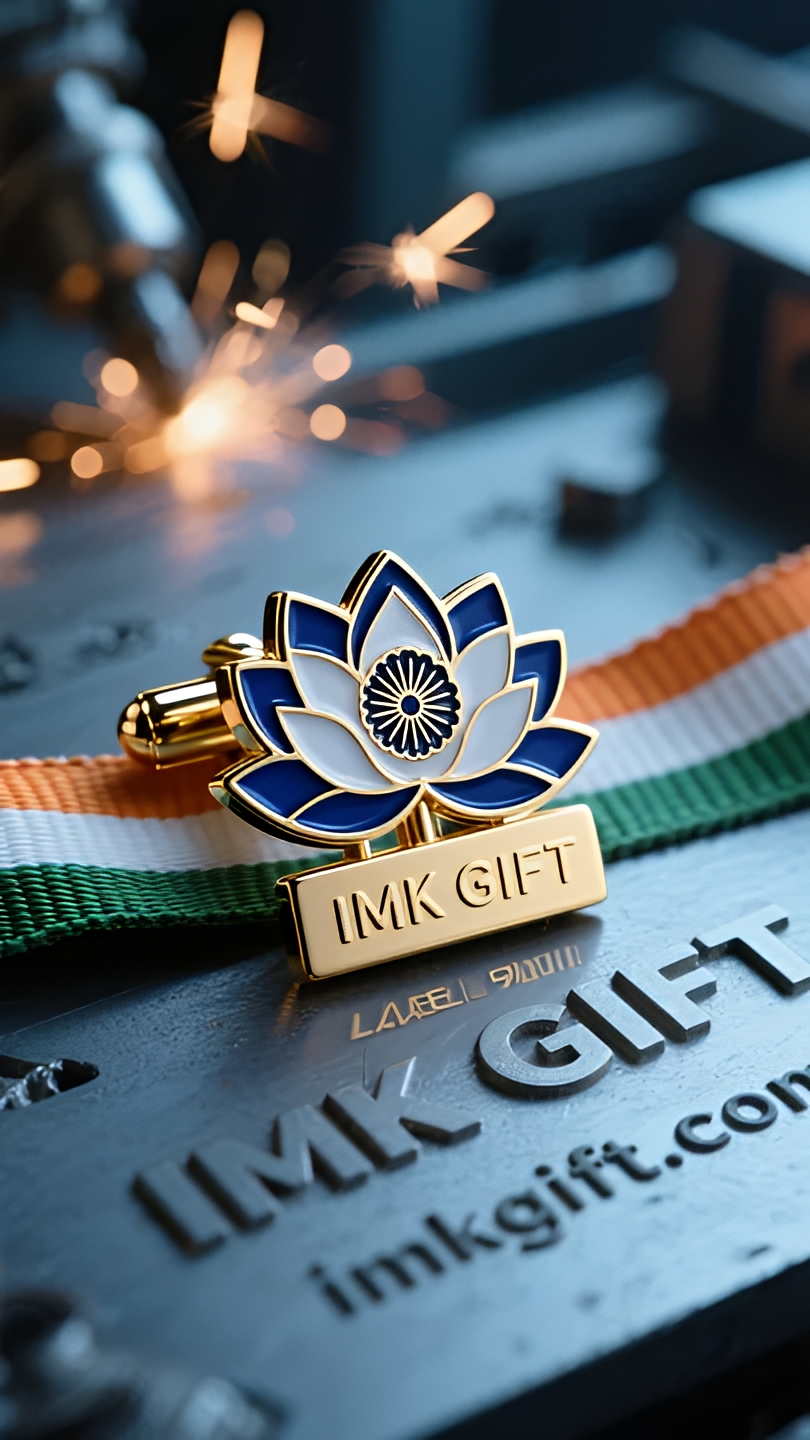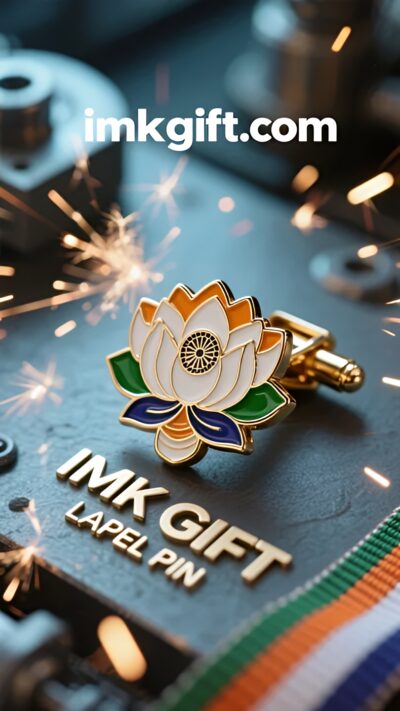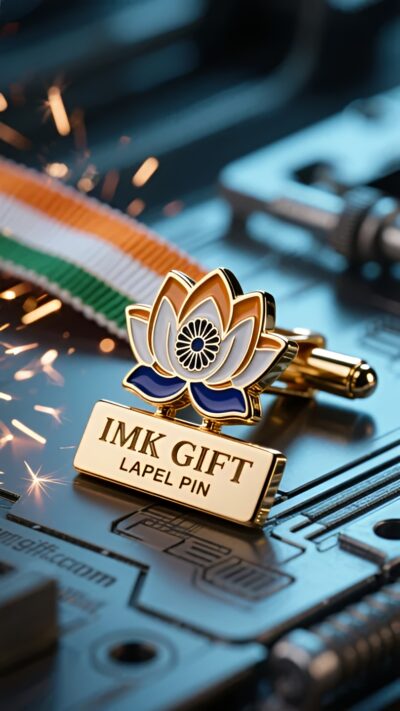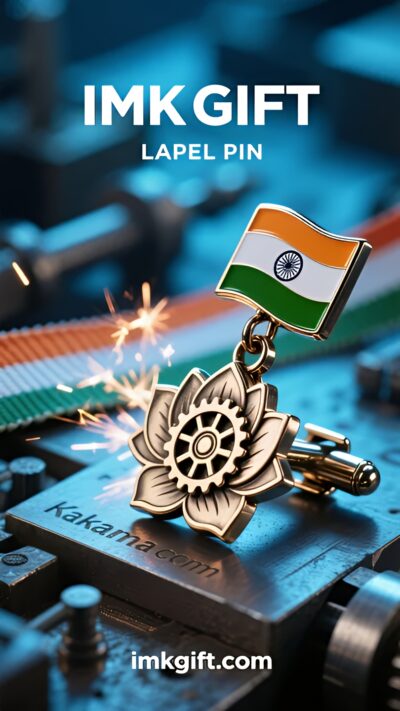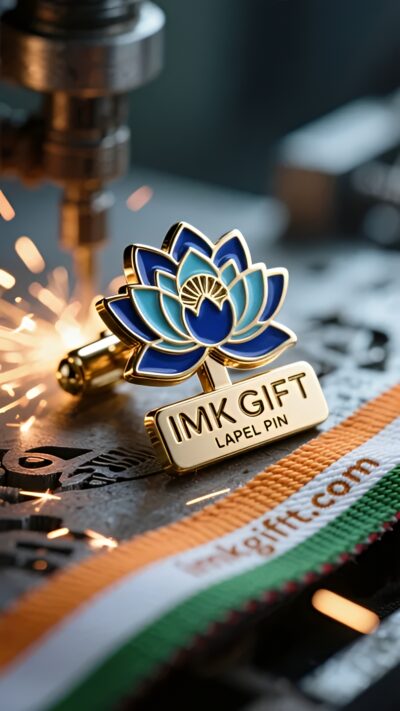in991-कमल-और-त-र-ग-झ-ड-र-ष-ट-र-य-द-ल-क-धड-कन-वस-त-र-क-अ-चल-पर-ख-द-ह-आ-ह
▼
झुलसे भरे सूरज दिल्ली की सड़कों पर चमकते थे और हवा में नारंगी, सफेद और हरे झंडे फहराए हुए थे, जिससे भारत के स्वतंत्रता दिवस का आयोजन चरम सीमा पर हो गया। Amidst this surging wave of patriotism, the lotus-shaped cufflinks pinned on the lapels of political dignitaries are, with a humble and solemn posture, conveying a deeper national spirit.
The three colors of the national flag represent a three-dimensional national declaration: orange symbolizes the courage to devote oneself to truth, white carries the wisdom of dialogue among civilizations, and green indicates the belief in the perpetuity of life. केंद्रीय अशोक चक्र अपनी 24 प्रवक्ता के साथ, निरंतर व्यवस्था और प्रगति के संतुलन को गतिशील बनाता है। यह आत्मा कमल कफ़लिंक की बनी है-24K स्वर्ण में उल्लिखित कमल के आकार में न केवल ध्वजज चक्र के सुनहरे अनुपात का प्रतिध्वनित होता है अपितु भारत की आठ प्राचीन सभ्यताओं के ज्ञान की ओर आठ पंखुडियों वाली कल्पना का भी संकेत मिलता है। कमल की विशेषता का अस्तित्व इस देश के समान है जिसने उपनिवेशण को सहन किया है, लेकिन हमेशा अपनी सांस्कृतिक जड़ों का पालन किया है, जो आधुनिकीकरण के युग में अपनी अनोखी आध्यात्मिक पवित्रता बनाए हुए है।
When politicians attach such cufflinks to the lapel of their suits, what they wear is not only an ornament but also a concrete commitment to the four life goals of “Dharma, benefit, desire and liberation”. जिस प्रकार भारतीय महाकाव्य ‘भगवद् गीता’ कहती है, “लाभ या हानि की परवाह किए बिना अपने व्यवसाय को पूरा करना।” कमल कफ अंचल की छोटी सी जगह में टक जाती है, जो हमेशा पहनने वाले को यह याद दिलाती है कि देश की महिमा की रक्षा फूलों के पुंकेसर की तरह की जानी चाहिए और लोगों की भलाई कमल के पत्तों की तरह होनी चाहिए।
आज भारत में झंडे उठाने वाले झण्डे की भव्यता और फुसफुसाते कफबटनों की गहराई दोनों ही हैं. जब तिरंगा झंडा और स्वर्ण कमल का फूल सूरज की रोशनी में एक साथ चमकता है, एक प्राचीन सभ्यता पारंपरिक प्रतीकों के साथ एक आधुनिक कथा लिख रही है-हर नागरिक राष्ट्रीय भावना का धारक और सभ्यता की चिंगारी का ट्रांसमीटर है.
The scorching August sun shone on the streets of Delhi, and the orange, white and green flags flapped in the wind, bringing the celebration of India’s Independence Day to a climax. Amidst this surging wave of patriotism, the lotus-shaped cufflinks pinned on the lapels of political dignitaries are, with a humble and solemn posture, conveying a deeper national spirit.
The three colors of the national flag represent a three-dimensional national declaration: orange symbolizes the courage to devote oneself to truth, white carries the wisdom of dialogue among civilizations, and green indicates the belief in the perpetuity of life. The central Ashoka wheel, with its 24 spokes, constantly rotates the balance of order and progress. This spirit is embodied in the design of the lotus cufflinks – the lotus shape outlined in 24K gold not only echoes the golden ratio of the flag wheel but also alludes to the wisdom of the eight ancient civilizations of India with eight petals. The trait of the lotus remaining unstained by the mire is just like this country that has endured colonization but has always adhered to its cultural roots, maintaining a unique spiritual purity in the tide of modernization.
When politicians attach such cufflinks to the lapel of their suits, what they wear is not only an ornament but also a concrete commitment to the four life goals of “Dharma, benefit, desire and liberation”. Just as the Indian epic “Bhagavad Gita” states: “To fulfill one’s vocation without regard for gains or losses.” The lotus cuff is tucked in the small space of the lapel, constantly reminding the wearer that the glory of the country should be guarded like the stamens of a flower, and the well-being of the people should be held up like lotus leaves.
Today in India, there is both the grandeur of the flag-raising flag and the depth of the whispering cuffbuttons. When the tricolor flag and the golden lotus flower shine together in the sunlight, an ancient civilization is writing a modern legend with traditional symbols – every citizen is a wearer of the national spirit and a transmitter of the spark of civilization.
八月炽热的阳光洒在德里街头,橙、白、绿三色旗帜迎风舒展,将印度独立日的庆典推至高潮。在这片沸腾的爱国热浪中,那些别在政要衣襟上的莲花袖扣,正以谦逊而庄重的姿态,诉说着更深层的民族精神。
国旗的三种颜色是立体的国家宣言:橙色象征献身真理的勇气,白色承载文明对话的智慧,绿色昭示生命永续的信念。而中央的阿育王轮以24根辐条,永恒转动着秩序与进步的天平。这种精神具象化在莲花袖扣的设计中——24K金勾勒的莲花造型,既呼应国旗轮轴的黄金比例,又以八片花瓣暗合印度八大古文明智慧。莲花出淤泥而不染的特质,恰似这个历经殖民却始终坚守文化根脉的国度,在现代化浪潮中保持着独有的精神洁癖。
当政治家将这样的袖扣别在西装翻领时,他们佩戴的不仅是装饰品,更是对”法、利、欲、解脱”四重人生目标的具象承诺。正如印度史诗《薄伽梵歌》所言:”履行天职不计得失”,莲花袖扣在衣襟的方寸之间,时刻提醒佩戴者:国家荣耀应如花蕊般被守护,人民福祉当如莲叶般被托举。
今日印度,既有国旗高扬的壮阔,也有袖扣低语的深沉。当三色旗与金莲花在阳光下交相辉映,一个古老文明正在用传统符号书写现代传奇——每个公民都是国家精神的佩戴者,都是文明火种的传递人。
▼
Contact Us
📞 Tel: +0086-760-85286839
📧 Email: sales3@imkgift.com

